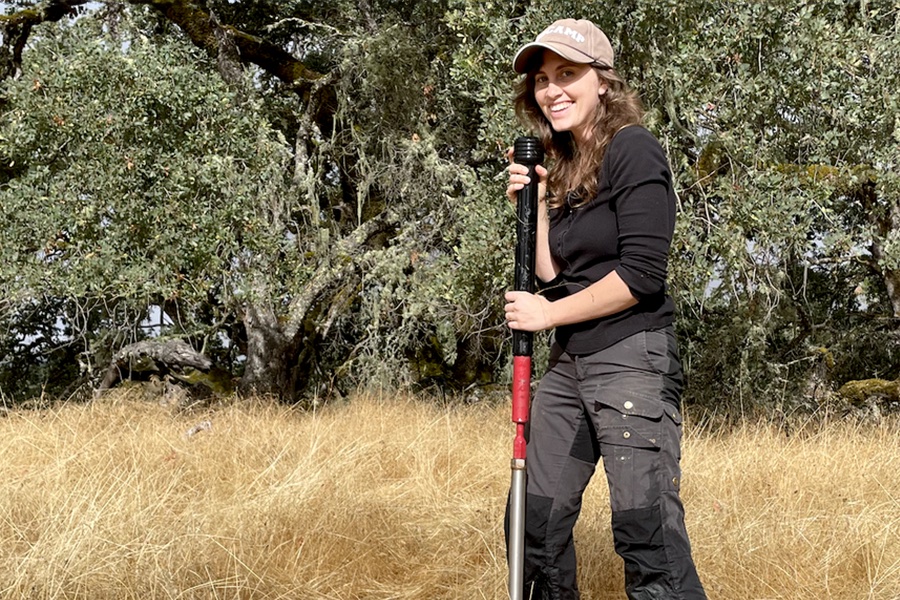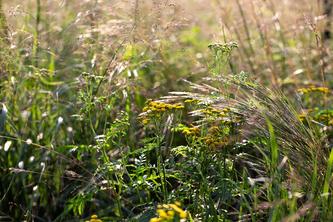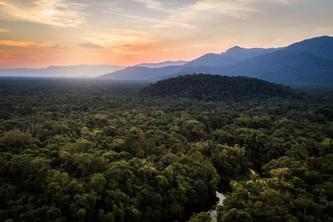
A struggle for the future of our planet is going on beneath your feet.
As one of the world’s top carbon sinks, soil plays a crucial role in storing carbon, mostly as dead and decaying organic matter. But while plants remove carbon dioxide through photosynthesis and channel the carbon into soil, they, along with soil organisms, also emit the gas as a byproduct of metabolism.
The big question is how to tip the balance to help soils store more carbon and release less.
Enter Kaitlyn Beidler, a postdoctoral researcher at the U of M’s Cedar Creek Ecosystem Science Reserve. She studies the key role of dead fungi in cycling soil carbon.
Soil fungi consist almost entirely of microscopic food-seeking extensions called hyphae.
“When they die, [the hyphae] become part of the fabric of soils,” Beidler says. “It’s important to understand what happens to these below-ground fungal bodies because they make up most of the carbon that sticks around in the soil, literally.”
Beidler wants to know what happens to the carbon that passes from dead fungi to the microbes that decompose them. She also asks if the carbon in the residual mass of dead fungi and other microbes—the necromass—will be stable.
Capturing the fate of fungi
To learn how the masses of dead fungi persist—or not—in soil, Beidler grows fungi in fluid-filled flasks, puts them in mesh bags, buries the bags, then digs up the mini “time capsules” to see what happened.
In a recent experiment, most of her samples lost 75 percent of their biomass in the first two weeks. Some had succumbed to the elements, but microbes likely finished off most of it. Only the most decay-resistant material survived.
Fungal necromass “is decayed by a unique and diverse community of bacteria and fungi which might differ depending on the chemistry of the necromass itself,” Beidler notes.
She can identify the microbes that decompose the fungi from the DNA they leave in the necromass. She can also track changes in necromass chemistry over time.
And even dead fungi have at least one survival strategy.
“Fungal hyphae live and die next to soil minerals, and sticking to clay minerals can physically protect fungal cells from being decomposed and recycled by other microbes," Beidler says.
Sunscreen for soil
Could any chemicals help protect the fungal necromass? One candidate is melanin, which fends off sun damage. While humans have it in skin, fungi have melanin in their cell walls, where it protects from UV rays and helps keep water in and pathogens out.
“Fungi with more melanin in their cell walls decay more slowly,” Beidler observes.
With this multipronged approach, Beidler is untangling the intricate web of carbon uptake, recycling, and storage.
“Ultimately,” she says, “I am interested in how necromass becomes stable soil carbon and how the traits of living and dead fungi influence this transformation.”
Read the original story from the College of. Biological Sciences.
- Categories:
- Agriculture and Environment
- Climate Change
- Research
- Soil





